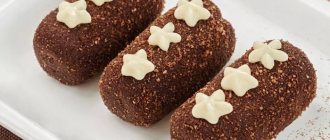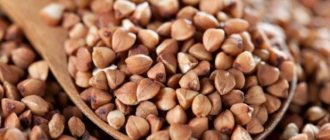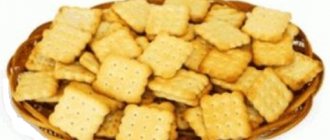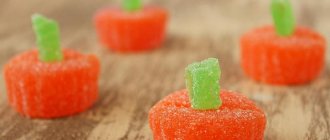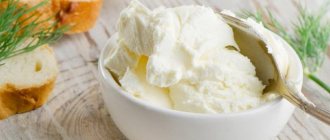Properties of custard cake
Nutritional value and composition | Vitamins | Minerals
How much does custard cake cost (average price for 1 piece)?
Moscow and Moscow region.
25 rub.
Custard cakes are among the ten most popular confectionery products throughout planet Earth. However, few people know that everyone’s favorite custard cake is a type of eclair. Back in the 18th century, the famous French pastry chef Marie-Antoine Carême decided to realize his long-standing dream of an ideal sweet delicacy that would please everyone without exception.
Monsieur Carême was called “the cook of kings and the king among cooks”; the culinary specialist and gourmet masterfully coped with the task and was the first to prepare eclair cakes. Eclairs got their original name eclair, which literally means “lightning” in French, due to the shiny surface of the cakes. It is interesting that it was with the recipe for eclairs that the “golden age” of confectionery art began.
The powers that be and mere mortals enjoyed eating the sweet delicacy. We can say that eclair cakes became the progenitors of most modern confectionery products. Currently, there are a sufficient number of types of custard cakes. Eclairs are often called dessert or custard cakes. In the USA, custard pies are called "long johns" or long johns. In Germany, custard cake is called nothing more than “hare’s paw” or “coffee bar.”
However, it is worth noting that the taste, as well as the filling, of custard cakes is strikingly different from eclairs. As a rule, custard pies are made with a characteristic elongated shape and filling. The finished confectionery product is covered with fondant or glaze made from chocolate, caramel or other ingredients. The type of custard cakes depends, first of all, on the filling that I use in the process of preparing the confectionery product.
Calorie content of Potato cake
These cakes are made from sponge or shortbread cookies, and the calorie content of a Potato cake made from a sponge cake is lower than a cake made from cookies. Since the calorie content of cookies is often high. Cookies or biscuit are crushed into crumbs, mixed with condensed milk, butter and cocoa powder, you can also add nuts to it. This cake is prepared without baking - you simply form “lumps” from the biscuit-chocolate mass, which you then decorate with nuts or cream.
For their rich taste and ease of preparation, these cakes are loved by both adults and children. The calorie content of the Potato cake is 380-400 kcal per 100 g . The weight of one cake that fits in the palm of your hand is approximately 70-80 g.
Types of custard cakes
Among the most popular and widely known types of custard cakes are the following:
- a classic custard cake or delicacy filled with custard and covered with chocolate glaze;
- choux pastries with cream filling;
- custard cakes with cream filling;
- custard cakes with curd filling;
- custard cakes with protein filling;
The calorie content of custard cake depends on the composition of the original ingredients and on the amount of sugar that is used in the process of making the confectionery product. In any case, custard cakes are considered quite high-calorie foods that should not be abused. This is especially true for people who suffer from diabetes or excess weight. The average caloric content of custard cake prepared according to the classic recipe is 433 Kcal.
However, the caloric content of custard cakes can be reduced. For example, instead of a rich filling of high-calorie cream, use low-fat cottage cheese for custard pies. Custard pies can be easily purchased in the confectionery or bakery departments of most domestic grocery stores.
Over several centuries of existence, the recipe for custard cakes has undergone changes and additions more than once. Nowadays, everyone can choose a suitable custard cake recipe for themselves and prepare a delicious delicacy at home. We think everyone will agree that store-bought custard pies cannot compare in taste to the homemade version of the confectionery product.
Benefits, harms, calorie content of 1 piece of eclair, per 100 grams
Calorie content of eclair per 100 grams is 440 kcal. 100 g of sweets contains:
- 3.22 g protein;
- 30.7 g fat;
- 36.25 g carbohydrates.
Read: Calorie content of boiled potatoes without peel
To prepare the cakes, wheat flour, sugar, butter, milk powder, eggs, salt, vanillin, cognac, alcohol, margarine, and sorbic acid are used. The delicacy is rich in vitamins B, H, E, minerals zinc, selenium, potassium, chlorine, calcium, cobalt, phosphorus, boron, molybdenum.
Calorie content of eclair with custard for weight loss
Due to their high calorie and fat content, eclairs with custard are contraindicated when losing weight. With frequent consumption of sweets, the intestinal microflora is disrupted, extra pounds are quickly gained, and the risk of constipation increases.
If you want to get in good physical shape, nutritionists do not recommend eating eclairs. For those with a sweet tooth who cannot refuse cakes, it is recommended to eat no more than 1 piece per day and in the first half of the day. This will significantly minimize the risk of weight gain.
Calorie content of eclair with cream per 100 grams
Calorie content of eclair with cream per 100 grams is 216 kcal. 100 g of product contains:
- 4.6 g protein;
- 12.8 g fat;
- 21.2 g carbohydrates.
Recipe for eclairs with cream:
- 120 ml of milk is mixed with 120 ml of water;
- Add 100 g of butter to the resulting mixture. All this is boiled to a boil;
- pour 150 g of flour sifted with 1 teaspoon of salt into the boiling liquid. Removed from the heat, the mixture is thoroughly mixed, infused for a quarter of an hour, heated again over the fire and kneaded until a ball-shaped dough is obtained;
- Beat 4 chicken eggs with a mixer and knead together with the dough;
Read: Calorie content of mackerel baked in foil
- Place the dough in a pastry bag, squeeze out the eclairs onto a baking tray lined with baking paper;
- eclairs are baked in the oven at 220° C for 20 - 25 minutes;
- to prepare the cream, beat 280 ml of cream with 100 g of powdered sugar;
- Eclairs are filled with prepared cream using a pastry syringe.
Calorie content of eclair with condensed milk per 100 grams
Calorie content of eclair with condensed milk per 100 grams is 340 kcal. 100 g of sweets contains:
- 6.12 g protein;
- 16.7 g fat;
- 41.4 g carbohydrates.
Despite the lower calorie and fat content than eclairs with cream, this product should also be excluded from the diet when losing weight and during a diet.
Calorie content of 1 piece eclair
Calorie content of eclair in 1 piece. depends on the type of cake. So, one eclair with custard contains 330 kcal, 2.41 g of protein, 23 g of fat, 27.19 g of carbohydrates. One brownie with whipped cream contains 162 kcal, 3.45 g protein, 9.6 g fat, 15.9 g carbohydrates.
In 1 piece eclair with condensed milk 255 kcal, 4.59 g protein, 12.53 g fat, 31.05 g carbohydrates.
THIS IS INTERESTING: Ready-made food for weight loss
Benefits of eclair
Classic eclairs with custard and condensed milk do not provide any benefit to the body. If you cannot give up sweets, we recommend that you use dietary recipes in which harmful components are replaced with healthy ones. So, to prepare the dough, you can use oatmeal as one of the ingredients, which normalizes the functioning of the gastrointestinal tract and reduces cholesterol levels.
Read: Calorie content of pea porridge without oil
Nutritionists advise adding whipped cottage cheese to the cake filling. It contains a lot of calcium that is beneficial for nails, hair and bones.
The harm of eclairs
Regular consumption of eclairs causes the following harm to health:
- extra pounds are gained;
- metabolism slows down;
- the risk of constipation increases;
- intestinal microflora is disrupted;
- diseases of the endocrine system develop;
- the likelihood of developing caries increases.
The product is contraindicated for diseases of the liver, gall bladder, pancreas, and stomach. Eclairs should be avoided if you are obese or have diabetes.
SUBSCRIBE TO SITE UPDATES
Source: https://horoshieprivychki.ru/kalorijnost/kalorijnost-jeklera
Calorie content of cakes: composition, harmful and beneficial properties
Currently, there are many types of cakes, and modern technologies make it possible to create more and more new types. The calorie content of cakes depends on the baked pastry dough, as well as the type of filling. The most popular test semi-finished products for making cakes are:
- Biscuits – up to 320 calories per 100g (main ingredients: eggs, sugar, flour);
- Shortbread dough - up to 410 calories per 100g (main ingredients: flour, butter or margarine, sugar, eggs);
- Puff pastry – up to 360 calories per 100g (main ingredients: flour, margarine or butter, water);
- Choux pastry – up to 270 calories (main ingredients: flour, eggs, water, butter).
The next factor that determines the calorie content of cakes is the types of filling, of which there are a great many variations. The most popular fillings for these confectionery products are:
- Creams (one of the most popular is custard, the calorie content of which reaches 220 calories per 100g of product);
- Curd fillings, for which fatty varieties of cottage cheese, cream, eggs are used (calorie content reaches 250 calories per 100g);
- Fruits;
- Nuts;
- Condensed milk (about 320 calories per 100g);
- Jelly (calorie content reaches 120 calories per 100g);
- Pudding (based on eggs, sugar, milk, flour - calorie content about 120 calories per 100g);
- Melted chocolate (the calorie content of which, depending on the variety, ranges from 400 to 580 calories).
Discussions on the benefits and harms of cakes are still ongoing. The cake is an excellent addition to a cup of coffee or tea, and will also be an excellent solution for dessert. Captivating with its small size, the calorie content of any type of cake is quite high. On average, the weight of one cake ranges from 70 to 120g. The average calorie content of a cake is about 300 calories (a significant part of a person’s daily diet).
The calorie content of cakes could be neglected given the rich vitamin composition, as well as the exceptional beneficial properties of this product, however, most cakes are a set of “empty” calories. Such cakes are sources of easily digestible carbohydrates, which do not provide long-term saturation of the body, quickly transforming into fat deposits.
Most of the nutrients contained in cakes are lost during the cooking process.
Are cakes that bad? Although the calorie content of cakes is high, a small piece of this confectionery product can significantly “recharge” you with energy during the working day, when there is no time left for a full meal.
The creams contain proteins - sources of essential amino acids and sugar, which, adding calories to the cakes, stimulate the production of serotonin - the hormone of happiness. Cakes also affect the pleasure centers of the brain, allowing you to relax and relieve tension.
Nuts and fruits are often used as fillings for cakes, which are sources of vitamins and beneficial microelements.
Cakes are not a necessary component of a healthy diet, being a kind of excess. However, there are some types of confectionery products that you don’t have to refuse.
What kind of cakes can be consumed without harm to the body? The lowest calorie content is for cakes made from choux pastry with fruit, jelly, and nut fillings.
Those watching their figure should avoid cakes filled with custard, which is high in calories compared to other fillings.
Cake “Potato”: calorie content, composition, portions
Potato cake, whose calorie content reaches 360 calories depending on the ingredients in the confectionery product, is one of the most popular types of cakes known throughout the world. Today there are more than 20 recipes for making this dessert. The classic recipe for Potato cake, which contains only 280 calories per 100g of product, includes the following ingredients:
- Cookie;
- Condensed milk;
- Butter;
- Cocoa powder;
- Nuts;
- Fruits.
As can be seen from the composition, the “Potato” cake, the calorie content of which is determined by its ingredients, is not a dietary product. The main advantage of this type of delicacy is the complete absence of heat treatment, since all the ingredients are mixed and whipped into a single mass, after which the cakes themselves are formed.
To reduce the calorie content of cakes, some chefs use bread crumbs instead of cookies, and also significantly reduce the amount of fat in the product. Depending on the base ingredient (breadcrumbs or cookies), you can also omit the cocoa powder.
It is recommended to eat Potato cakes, which are high in calories and lack vitamins and nutrients, more than once a week. The permissible single serving is up to 100g. The average weight of one Potato cake is 70g.
Calorie content of sponge cakes and meringues
Meringue cakes are made from egg whites and a lot of sugar, whipped into cream and baked in the oven. The calorie content of meringue cakes is about 375 kcal per 100 g, while the weight of one cake with a diameter of 3-5 cm is about 10 g.
Sponge cakes are made from sponge dough, greased and soaked in various creams and syrups, decorated with icing, nuts, chocolate, marmalade, candied fruits and berries, etc. The calorie content of sponge cakes ranges from 250 to 450 kcal , and depending on the filling it can be higher.
Calorie content of Macarons
Macarons are French pastries that consist of two round cookies joined together with cream or jam. Their peculiarities, firstly, are that they are prepared from almond flour, and secondly, they must be colored, that is, food coloring must be used in their preparation. The cake layers of these cakes are so light that they literally melt in your mouth. The calorie content of macaroons is on average 400-420 kcal per 100 g - the higher the calorie content of the filling, the higher the calorie content of the cakes.

